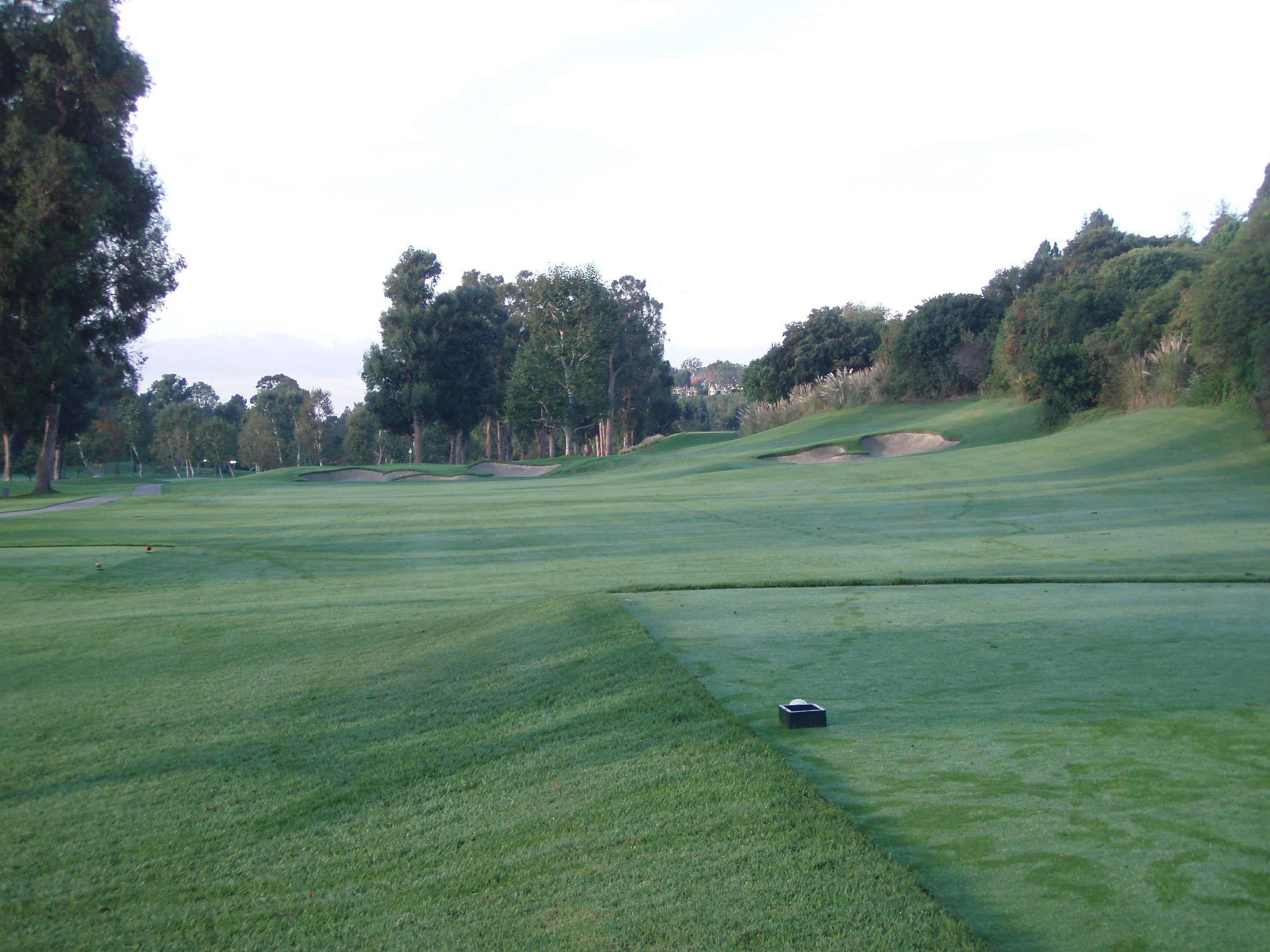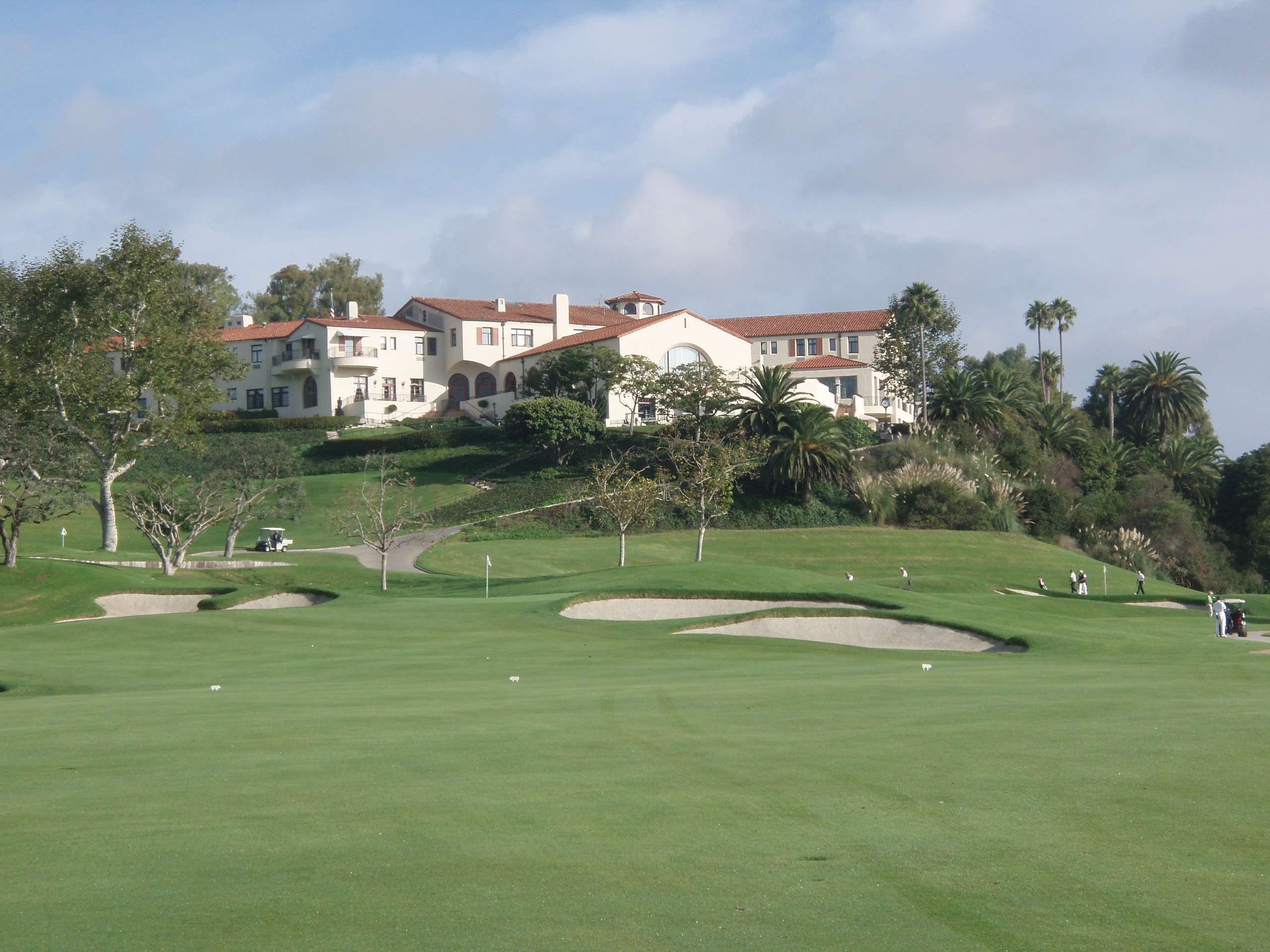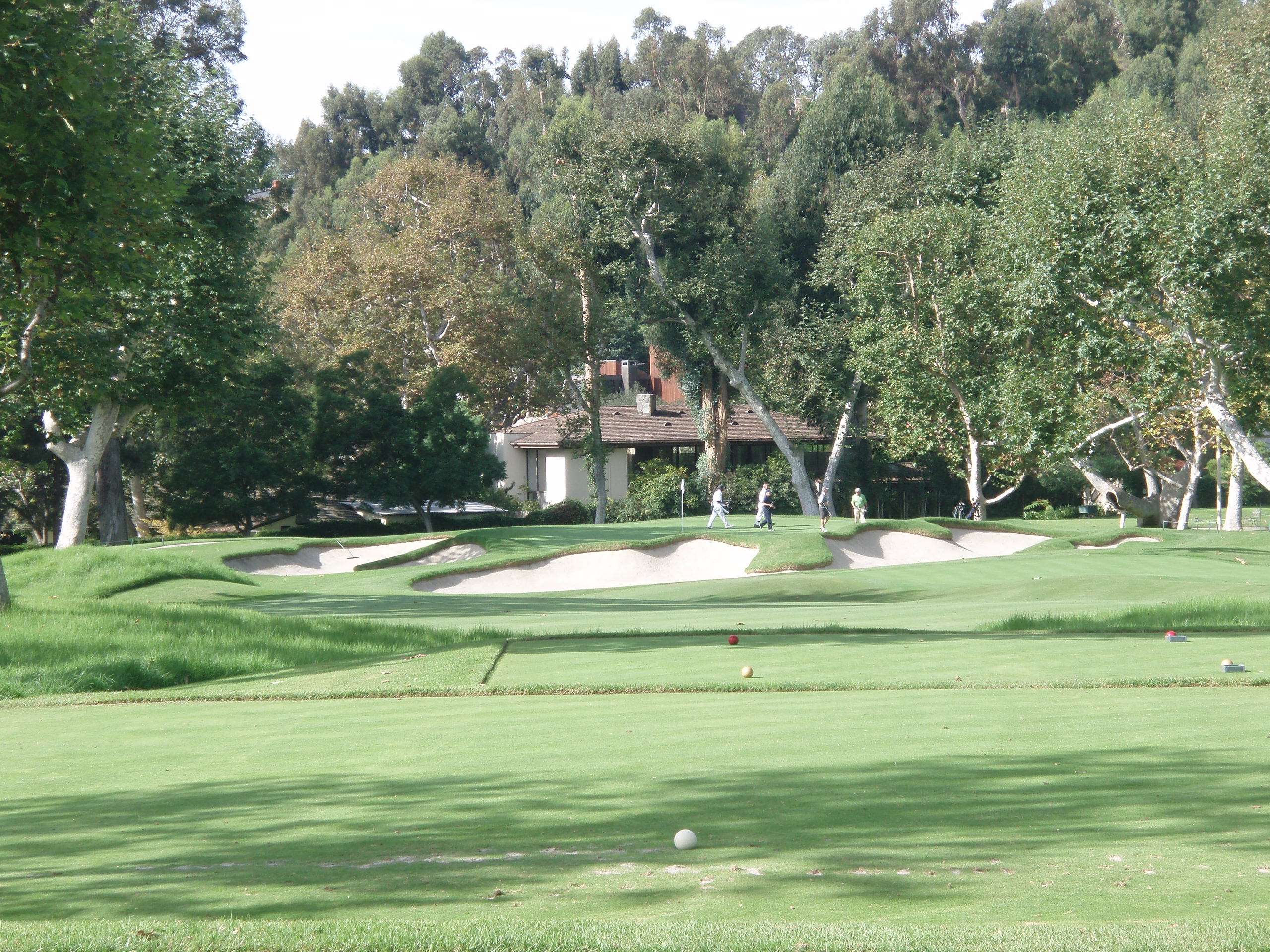The brilliant Redan 4th is one of those holes you could play repeatedly all day long without tiring of the fun or the challenge
The approach to the 5th, with the hook lie forcing you to interact with the RHS mound, is one of the most enjoyable on the course
The iconic 6th, with its green-centre bunker - the shaping of the green ensures there is nowhere on the green that doesn't offer the chance to lag the ball near the hole
Overlooking the tricky, two-tiered 9th green is the sprawling clubhouse
For years I have fantasised about playing the 10th hole, a par four of just 315 yards that is made by the angles created by the bunkering and green orientation... the reality was even more thrilling than I imagined
The 15th green appears to have been inspired by the Biarritz concept, creating a tough second shot
At a modest length and with the small green ringed by sand, the 16th comes at the perfect point of an important round or a do-or-die match
Approaching the 18th green is one of those moments you will remember forever
Course name: Riviera
Location: Pacific Palisades, CaliforniaFour Word Course Review: Bunkering and routing masterclass
It's amazing, looking at Riviera today, to consider that George Thomas had to be convinced to take on the job of designing the course. With little in the way of natural land movement to utilise, Thomas and construction/bunkering supremo Billy Bell had to construct most of the features that make the course so fascinating, while routing the holes to make the best use of the natural barranca that weaves through the site.
The result is a masterpiece of variety, challenge and brilliant design - testing every aspect of your game and calling for the ball to move both ways off the tee, for approaches to be placed smartly on the greens and for recovery play to be precise.
Of course it was a dream come true to hit a drive from the elevated 1st tee and then play the likes of the Redan 4th, the par three 6th with its green-centre bunker, twin fairway 8th, "Rubix Cube" 10th and the iconic finishing hole, but lately I have been thinking that the very best courses identify themselves not by their best holes, but by their weakest. Of course when it comes to the best of the best, "weakest" is relative!
At Riviera, I didn't feel there was a single hole that let down those around it. If forced to select the two weakest holes I might opt for the 3rd and 14th, but both are still well worthy of praise, especially on the flat ground they occupy.
The holes of each par complement each other well. The par fours are generally on the long side, but the shot demands are rarely repetitive - especially from the tee - while the par fives demand that all three shots (few mortals will reach any of them in two) are placed with the following shot in mind.
The four one-shotters call for very different approaaches and for me required a four wood, six iron, four iron and seven iron from the back tees. Ben Hogan called the Redan 4th "the greatest par three hole in America" and it's hard to argue with his choice of a hole that offers options galore to get past an enormous front bunker.
The 4th is characteristic of Riviera in two ways:
First, the bunkering is BOLD (the capital letters seem necessary), with the likes of the greenfront bunker at the 1st, fairway bunker at the 7th, cross bunker at the 10th, fairway and greenfront bunkers at the 15th and circling bunkers around the 16th green joining the front bunker on the 4th in dominating both the strategy and visuals of the holes.
Second, it takes a well-known template hole and adds a healthy dose of interpretation to create something unique (as well as the Redan 4th, is that not an Alps mound on the 5th? The 13th, before addition of trees inside the dogleg, was a Cape, the 14th doesn't look unlike a Macdonald/Raynor Eden hole and the 15th features a rotated and elongated Biarritz green).
Aside from the masterful bunkering (and although the aesthetics have changed under Tom Fazio's recent stewardship, the placement, I am informed, stays very much true to Thomas and Bell's original creation) the barranca is the major hazard to be avoided. It is employed many ways, crossing the 1st and 11th holes - both par fives - to threaten the second shot, hugging the front of the green at the par four 12th, flanking the 7th and 13th and splitting the 8th hole's two fairways to force a significant choice on the tee. I found the grass in the barranca long enough to swallow a ball, making it a true hazard in the absence of water.
The 10th was the first hole I saw as the sun rose before my round, and as I walked to the 3rd tee there it was right before me (it was hard not to immmediately turn left at that stage), so when the time came to play the hole, I was beside myself with excitement. Thankfully, I managed a straight drive over the left side of the cross bunker and a sand wedge to within eight feet of the front pin before I two putted for a satisfying par that made sure my memories of one of the best three holes I have ever seen will be sweet.
Playing the hole, it was sensational to see its angles, bunkers and slopes with my own eyes and imagine how I might attack different pins. Riviera's members are indeed fortunate to have the chance to know that hole intimately.
The other major eye-opener was the 6th green, its central bunker surrounded by sections of green that are connected by steep slopes allowing a ball to be putted or chipped around the unconventional hazard to any other part of the green. My weak approach left a chip from the front right fringe to a back left pin and there were three or four ways of playing the shot to get around (or over) the bunker, which was directly between me and the hole.
Add to all of that great golf the beautiful hilltop clubhouse overlooking the course, the impeccable conditioning, Los Angeles' glorious weather and you have the complete package.
For this Australian, it was also special to play the course over which Steve Elkington won the 1995 PGA Championship and Adam Scott and Robert Allenby have won the LA Open in the current decade. Not to mention it being the course that brought Ben Hogan his first US Open in 1948 and was the site of Tiger Woods' first Tour event aged 16.
Having spent my teens and twenties dreaming of playing Riviera, I can now spend my coming years remembering how the course and club exceeded my every hope and expectation and taught me just what is possible on a flat site with the right men steering the ship.









No comments:
Post a Comment